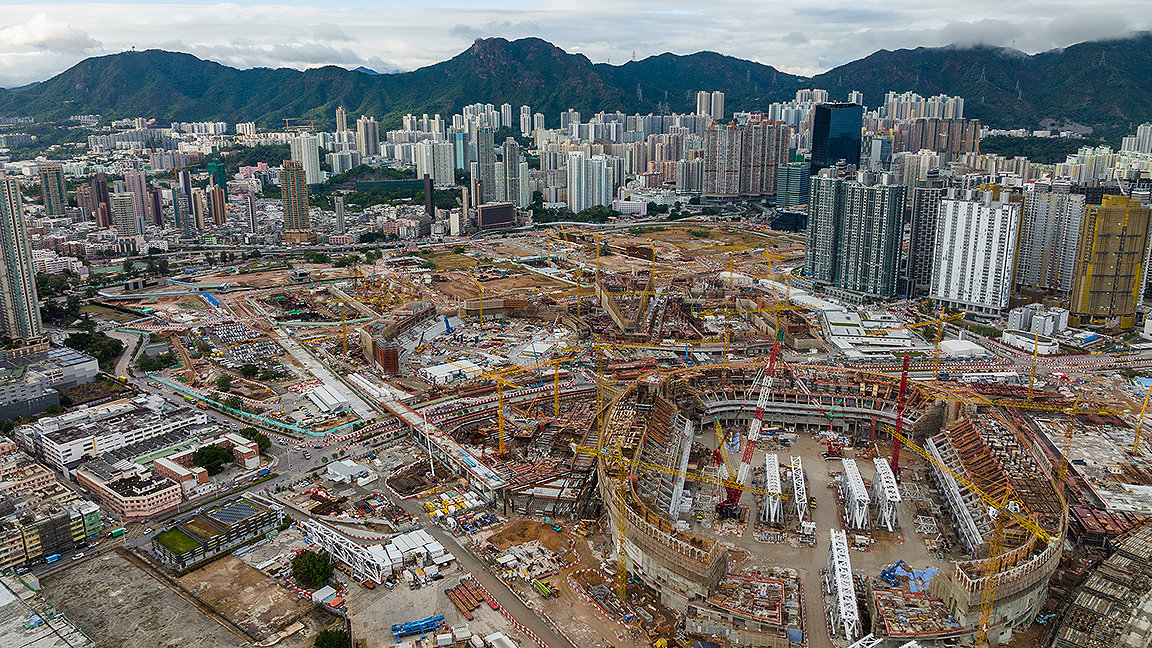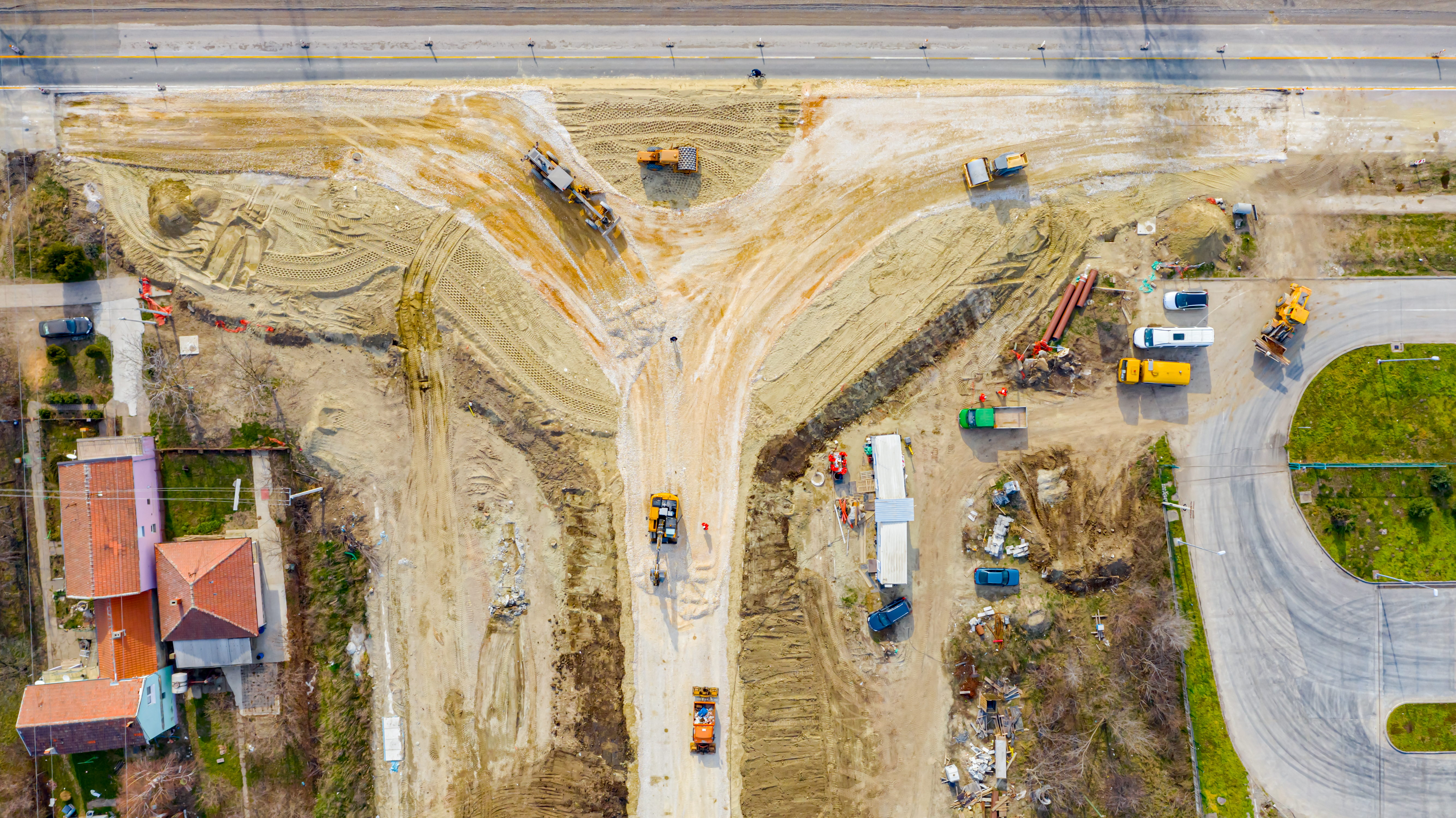
After uncertainty following the COVID-19 pandemic, construction in Asia is entering a period of significant growth.
Globally, the industry is expected to grow by US$4.5tn to US$15tn between 2020 and 2030. A huge proportion of this growth will take place in Asia – up to US$7.4tn of that 2030 figure.
As Arcadis Greater China growth director Francis Au comments: 'Construction is key when it comes to accelerating economic recovery. Government forecasts suggest economic growth of 3.5%–5.5% this year in Hong Kong and, according to the Construction Industry Council, we can expect total construction expenditure to exceed HK$300bn (US$38.2bn) per year for the next ten years.
'We are seeing high levels of investment in major infrastructure projects, including the HK$100bn (US$12.8bn) Northern Metropolis and the Kau Yi Chau Artificial Islands, which will provide additional land and create significant development opportunities for both the public and private sectors.'
However, Turner & Townsend head of real estate, Asia, Brian Shuptrine sounds a note of caution. 'Although the rate of inflation is slowing, construction costs are expected to remain high – a trend that has been exacerbated by capability and capacity limitations, rising interest rates and high inflation.
'Even though disruption in global supply chains has eased, skills shortages and construction productivity are the biggest constraints in the industry, all of which continue to affect costs.'
Demographics make skilled labour shortages likely
Despite rapid growth expectations, all our correspondents agree that construction in 2023 is characterised by shortages in labour and materials markets.
According to RLB's director of North Asia H.K. Yu, 'Labour shortages are a common issue across many countries in the region. Although mainland China has yet to be hit, its economic recovery after the pandemic may exert a heavy demand on skilled labour this year.
'In Hong Kong, the shortage is compounded by a rapidly ageing skilled labour force. While the availability of skilled labour in other Asian cities is expected to improve this year, external economic pressures may push labour costs higher in the short term.'
Au picks up on this, adding: 'An ageing population and constraints on the availability of migrant labour suggest that, in the next five years, we could be facing a shortage of 40,000 skilled workers and 15,000 professionals, supervisors and technicians in Hong Kong alone.'
Operators in mature markets might find it difficult to attract workers from other countries as significant growth occurs across the continent. Shuptrine states that: 'Major markets such as Japan, South Korea and Singapore are becoming increasingly saturated and expensive.
'This is why the emerging markets in Asia will continue to be so important in 2023. Countries such as India, Indonesia, Malaysia, the Philippines and Vietnam are well placed to benefit from this overspill as investors and developers seek new opportunities.'
Inflation prolonging or preventing projects
The Russian invasion of Ukraine and the effects of inflation mean some materials are still hard to come by or increasingly expensive.
As Yu notes, 'High inflation and rising interest rates will continue to push up construction cost, and tender price escalations may be far from over. This may have an impact on developers' investment decisions, which in turn may reduce the number of new projects in the market, adding uncertainty to the construction industry.'
In addition to widespread labour shortages, individual markets have their own quirks and difficulties. According to Au, a further issue driving up cost in the Hong Kong SAR is that 'many employers still procure their developments through fixed-price, lump-sum contracts, with watertight terms and conditions. This means that risk is transferred to contractors and suppliers, who are pricing their services accordingly.
'The overall impact is that, when the market is good, employers are paying the price for the risk of something that may not happen, or contractors are absorbing those risks without considering the time and financial implications when the market is challenging.
'The result is that many projects end up being completed late, over budget and with many of the benefits not realised.'
New markets and innovation can overcome risk
Investors looking instead to enter new markets still face risks, however. Shuptrine says: 'Supply chains will often be less established, requiring a more hands-on approach from client teams.
'We are seeing a growing movement to establish client-side centres of excellence in regional hubs, often leveraging external professional partners. They can then work with local supply chains to understand the unique constraints or challenges on the ground.
'This programmatic approach will help ensure consistent standards when it comes to health and safety, build quality and cost benchmarking.'
While all our correspondents agreed that material shortages will still play a part, they also agreed that this may encourage innovation in the sector.
Au takes up this theme: 'One solution would be increasing the use of innovative technology and the wider adoption of BIM, design for manufacturing and assembly (DfMA), modular integrated construction (MiC), and robotics to enhance the efficiency, sustainability and safety in our planning and working processes.
'When implementing large-scale infrastructure projects, it would also be beneficial to consider partnerships such as early contractor and supplier involvement, as well as revenue-sharing mechanisms in procurement strategies to help bring down risk-related costs.'
This is echoed by Yu, who reports that in Hong Kong, 'the government has been advocating for the use of BIM and MiC in projects in the public sector'.
'These initiatives will help reduce the size of the labour force on construction sites and improve productivity. It is also expected that robots and automated technology will become more widely used on construction sites.'
Greater emphasis placed on sustainability
In addition to improving productivity, sustainability is high on the agenda in Asian construction, as in all other markets.
Yu notes: 'As nations pledge to achieve net-zero carbon emissions by 2050, more emphasis has been placed on sustainability in the built environment. For instance, the Singapore Green Mark certification scheme has been revised, with an aggressive hike in the energy efficiency standard, while Cambodia has announced a focus on increasing green logistics to reduce embodied carbon.'
Shuptrine elaborates: 'There is a growing appetite and need to embed sustainability in the real-estate sector. While governmental mandates and plans to achieve net zero vary significantly across the region, corporate and sustainability commitments are playing an important role in shaping new ways of working and office occupancy.
'In major economic hubs such as Singapore and Hong Kong, corporate investors need to demonstrate consistency across their global assets. Helping to build a more resilient and sustainable supply chain will enhance asset viability while reducing environmental impact in the long run.'
'In major economic hubs such as Singapore and Hong Kong, corporate investors need to demonstrate consistency across their global assets'
Region braced to take on global challenges
Clearly the construction sector in Asia is forward-facing, while being alert to a number of possible dangers that might slow growth. There is no doubt that labour shortages remain the biggest blocker in the sector, both in Asia and elsewhere.
Yet the importance of sustainability and increased productivity to development in the region also show how its opportunities are the same as in other global markets.
Francis Au is director of Greater China growth at Arcadis
Brian Shuptrine FRICS is the head of real estate, Asia, at Turner & Townsend
H.K. Yu is director of the North Asia region at RLB

